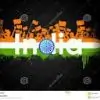Notable moments in the Australian Tri-Series[edit]
- 1979-80 - The match on 27 November 1979 between Australia and West Indies in Sydney was the first official One Day International to be played at night. Like the tri-series concept itself, night matches were a World Series Cricket initiative that was adopted into ODI cricket.
- 1979-80 - England defeated West Indies by two runs in Sydney when, West Indies requiring three runs to win from the final ball of the match, England captain Mike Brearleypushed all of his fieldsmen, including the wicket-keeper, back to the boundary. ODI rules were changed to incorporate fielding restrictions to prevent any repeat of this incident.

- 1980-81 - In the third final, with New Zealand needing six runs from the final ball to tie the match, Australian captain Greg Chappell ordered his younger brother, Trevor to bowl the ball underarm along the ground. This was one of cricket's most controversial moments of all time. ODI laws were changed so that any ball delivered underarm would be called a no-ball.
- 1981-82 - In the final qualifying match, Australia defeated West Indies at Sydney on run-rate after rain washed out the last 6.5 overs of the match; the Melbourne Age newspaper later alleged that West Indies had deliberately lost the match to ensure that Australia got to the finals series ahead of Pakistan, which would result in a gain of $800,000 to the Australian Cricket Board in extra gate takings. West Indian captain Clive Lloyd won a libel action and $100,000 in damages against the newspaper.
- 1982-83 - New Zealand breaks the world record for the highest successful run chase in an ODI, scoring 297-6 to surpass England's 296-5 in Adelaide. The record stood until 1992.[16]
- 1982-83 - In the second final at Melbourne versus Australia, New Zealander Lance Cairns scored the then World record fastest ODI fifty off 21 balls, hitting 6 sixes. This is the still currently the fastest 50 in Australian Tri-Series matches.[17]
- 1983-84 - The first ever tied One-day International took place in the second final at the MCG between Australia and West Indies, after Carl Rackemann was run out attempting the winning run.
- 1984-85 - West Indies were the first team to go through the qualifying round unbeaten by winning all 10 matches. Although they lost the first match v Australia, they came back from behind to win the finals series 2-1.[18]
- 1985-86 - After having clinched a finals berth, Australia was defeated by New Zealand by 206 runs in Adelaide after being bowled out for 70. This remains Australia's heaviest defeat by runs in ODI history.[19]
- 1985-86 - Australian fast bowler Bruce Reid took the first hat-trick in the history of the Australian Tri-series in Sydney versus New Zealand on 29 January 1986.
- 1986-87 - This season was the first time the 4-times Tri-Series champions, West Indies did not make the finals as England beat Australia 2-0. Mike Gatting's side also won that season's Ashes Test match series and the Perth Challenge one day tournament.
- 1988-89 - The first match of that season's tournament, West Indies v Pakistan, Adelaide, 10 December 1988, was the first one day international to feature shirts bearing the player's names.[20]
- 1988-89 - In the third final at Sydney, rain stopped play for one hour and 25 minutes with West Indies at 47/2 after 6.4 overs chasing Australia's 4/226 off 38 overs, and West Indies target was revised to 108 off the 18 overs that remained; West Indies won the match (and the competition) with 4.4 overs remaining after Desmond Haynes hit Steve Waugh for six. Australian fans loudly booed this unsatisfactory conclusion, and criticism from the media led to the average run rate method being replaced by the most productive overs method for setting revised targets in interrupted matches.[21]
- 1992-93 - West Indian all-rounder Phil Simmons recorded bowling figures of 4/3 from 10 overs against Pakistan in Sydney. These remain the most economical bowling figures in one-day international history (qualification of 30 balls bowled).[22]
- 1995-96 - The first match in the tournament, West Indies v Sri Lanka Adelaide, 15 December 1995, was the first One Day International that featured numbers and names on the back of player's shirts after they were introduced for that season's Mercantile Mutual Cup tournament.[23] That same year, Michael Bevan famously hit four runs off the last ball of the match to give Australia victory against West Indies on New Year's Day.[24]
- 1996-97 - Australia misses the finals for the first time since the 1979-80 Series; it is also the first time West Indies finish as Runners-up, with Pakistan winning the series 2 - 0, and not even a blackout in the 2nd final could stop them from winning.
- 2000-01 - Mark Waugh scored 173 runs for Australia against West Indies at the Melbourne Cricket Ground, the highest innings total in Australian Tri-Series history.[25]
- 2001-02 - Australia misses the finals for a third time, South Africa wins the finals 2 - 0 over New Zealand.
- 2003-04 - Ajit Agarkar recorded bowling figures of 6/42 from 9.3 overs against Australia at the Melbourne Cricket Ground. It was the first and, to date, only six wicket haul in an Australian Tri-series match.[26]
- 2005-06 - In the third final at Brisbane, Adam Gilchrist scored the fastest century in Australian Tri-Series history off 67 balls versus Sri Lanka.[27]
- 2006-07 - Despite losing 5-0 to the Australians in the Ashes, England staged a comeback to win the tri-series against them.[28]
- 2011-12 - Daniel Christian became the 31st person, and only the 4th Australian, to take a One Day hat-trick.[29][30]



























34